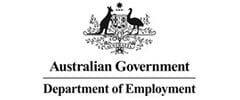Resilience. That’s what people need. ‘We just need them to demonstrate more resilience’, said a frustrated client last week. As a result, I found myself asking: What does that mean? What does ‘be more resilient’ mean in the current environment?
Especially with the challenges people are facing. Some team members still in lockdown. Others with more flexibility. Some opting to take annual leave. Yet others not really wanting to because ‘there’s no-where to go’. In addition, the need to process all the change that is happening. Similarly, the need to lead our teams against a backdrop of uncertainty. Hence, I can understand if people react negatively to the call to ‘be more resilient’.
My little melt-down
I recently had a little melt down. Admittedly, over something very minor. I was struggling with my academic paper. Clearly a trivial matter, when I think about what some people are dealing with at the moment. But as the tears flowed, I was telling myself that I couldn’t do it. That I would never find the answers. Absolutely, the task was beyond me. I’m embarrassed to say that I felt hopeless.
I went out for a run and on my return felt better about my chances of writing something intelligent. Consequently, feeling very sheepish about my demeanour. In addition, acknowledging that what happened was probably just a release of built-up stress.
Importantly, it taught me a little more about my own resilience. Hence, I was grateful for the lesson.
What does resilience mean?
Resilience is about effectively dealing setbacks and overcoming difficult challenges.
Brook and Brewerton (2018) suggest from a strengths-based perspective, a person who is demonstrating resilience is at their best when they:
- Tend to see problems as threats or opportunities
- Are able to quickly recover from stressful or traumatic experiences
- Persist in solving challenging or complex tasks in the face of stress, pressure or setbacks.
Alternatively, a person who is demonstrating less resilience means they:
- See each setback or problem as difficult; or an impossible hurdle to overcome
- Do not believe in their ability to deal with challenges and require considerable support from others
- See risk everywhere and are fearful of change.
Demonstrating resilience
In my little example, I wasn’t demonstrating resilience. I had forgotten to call on my resources. Meaning those things within me and around me that can make a difference. For me, resilience is all about:
- Acknowledging (or being mindful) about what is happening
- Focusing on what I can control or what is in my control
- Calling on my resources to move forward
- Being kind my myself (including watching out for the negative self-talk)
Importantly, ‘calling on your resources’ means breathing into the strengths that are inside you. For example, your creativity, strategic mind, empathy, efficiency or other strengths. In addition, calling on people who can help. Furthermore, turning to nutritious food, water, exercise and sleep as things that are within your control. Especially making sure you are looking after yourself in this way.
Furthermore, Dr Lucy Hone resilience expert, shares ‘Three secrets of resilient people’ in her TEDxChristchurch talk. Not only has Dr Hone researched resilience extensively. In addition, she shares her person story of tragedy and experience with resilience. She says resilient people:
- Understand that bad stuff happens; that suffering is a part of life
- Are careful in selecting where they focus their attention
- Ask ‘is what I am doing helping or harming me?’
The Lotus flower
We’ve used a lotus flower to give you a visual around resilience. The lotus flower grows in swampy, muddy conditions. There is something about recognising that mud is a part of life. That we can find our roots in mud. At the same time, grow and flourish above it.
































